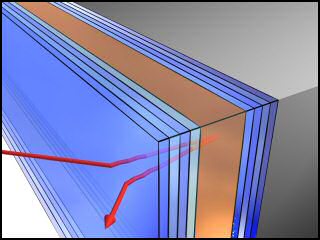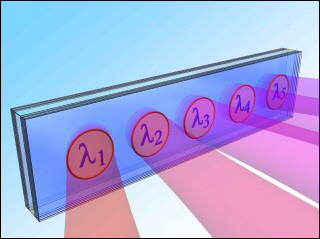Ultra-fast saturable absorbers for Wavelength Division Multiplexing Terabit/s all-optical regeneration
The Quantum Dot group is involved in the ASTERIX project of the Réseau National de Recherche en Telecommunication. This project brings together both material and optical reasearch laboratory from the University and CNRS and industrial partners (Alcatel, Yenista) for the realization of a saturable absorption module for terabit/s WDM regeneration. The contribution of this group is related to the optical characterization of the saturable absorption materials, at the heart of the module, especially from the point of view of time reduction, thermal simulation, and cross-talk limiting WDM operation.
On the other hand, the saturable absorption of quantum dots, where the confinement of carriers is further increased as compared to quantum wells, could represent a potentially interesting alternative to quantum wells. Though the absorption properties of quantum dots have been much less investigated than for quantum wells, one could think that the delta-like density of states of quantum dots as well as the presence of isolated absorption centers, distributed over a large wavelength range, could be used to improve some of the features of saturable absorption as compared to quantum wells. The small amplitude of the quantum dot absorption and the strong inhomogeneous broadening could be favourably used in Wavelength Division Multiplexing (WDM) schemes. The reduction and control of reponse time, from the nanosecond down to the picosecond regime, is also another aspect that has not be really adressed so far in the litterature.
RNRT ASTERIX Project : http://www.telecom.gouv.fr/rnrt/rnrt/projets/res_01_40.htm
Contact : Sébastien Sauvage
Electronic mail : first_name_without_accent.name@ief.u-psud.fr
  |
| |